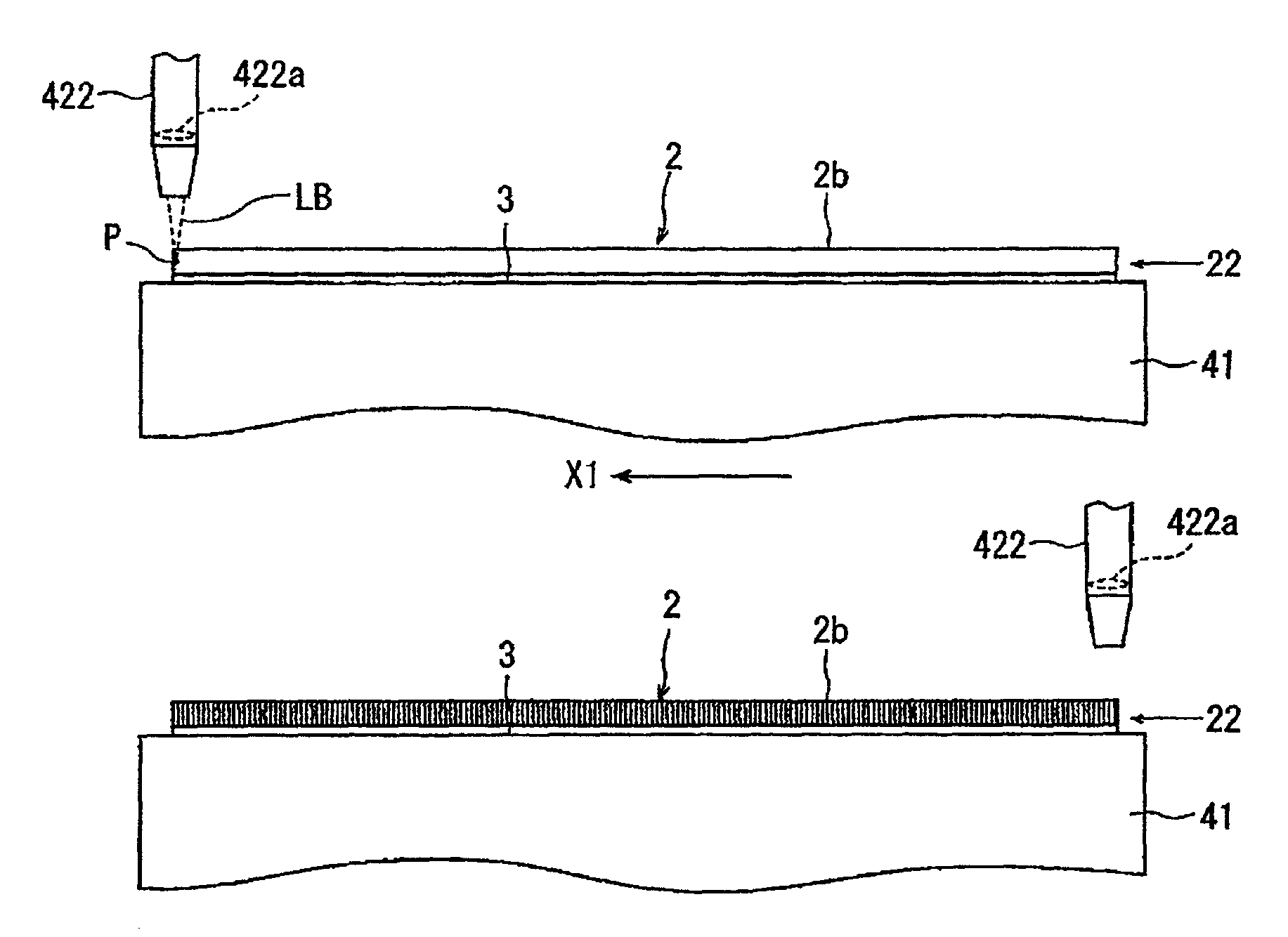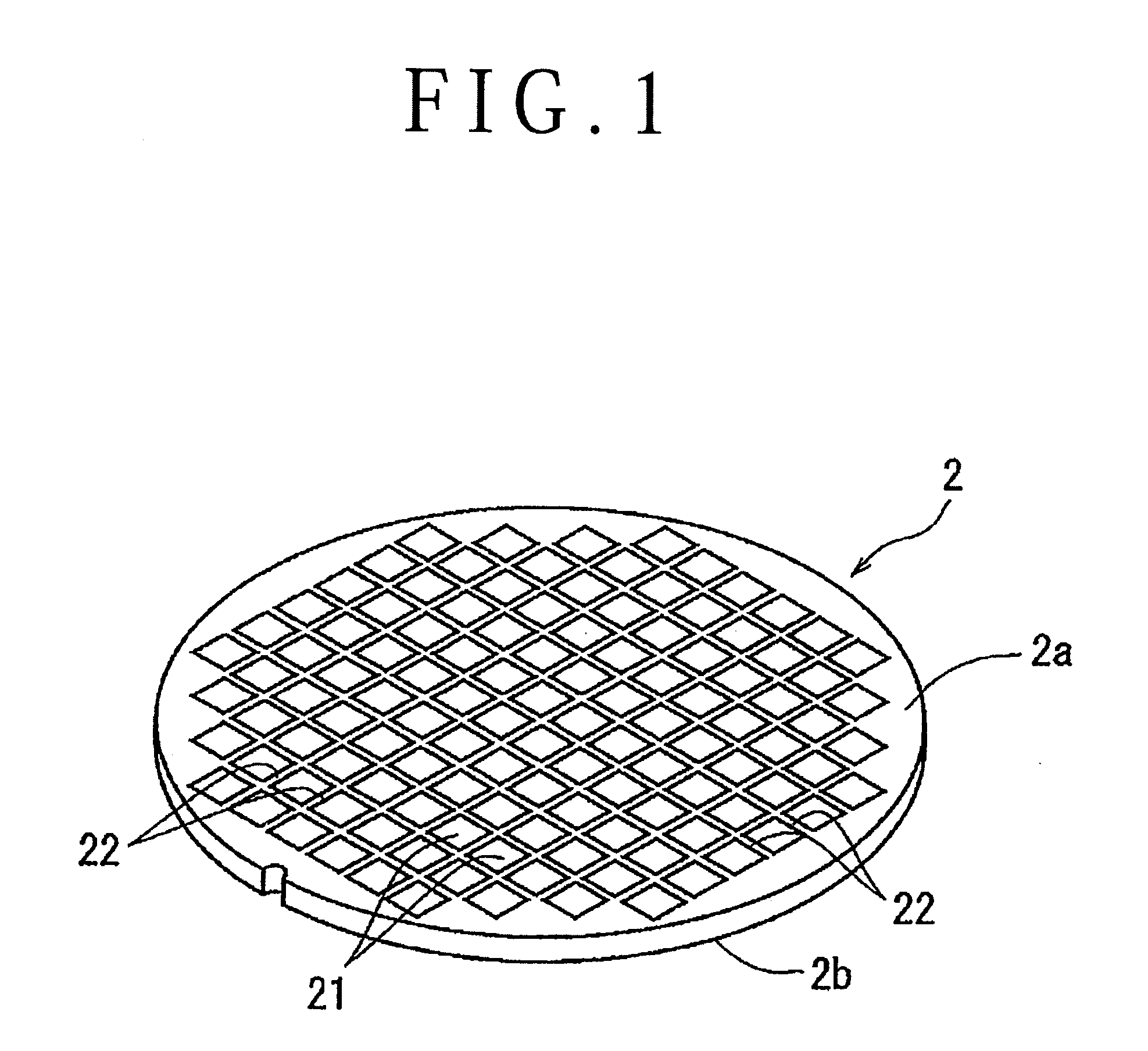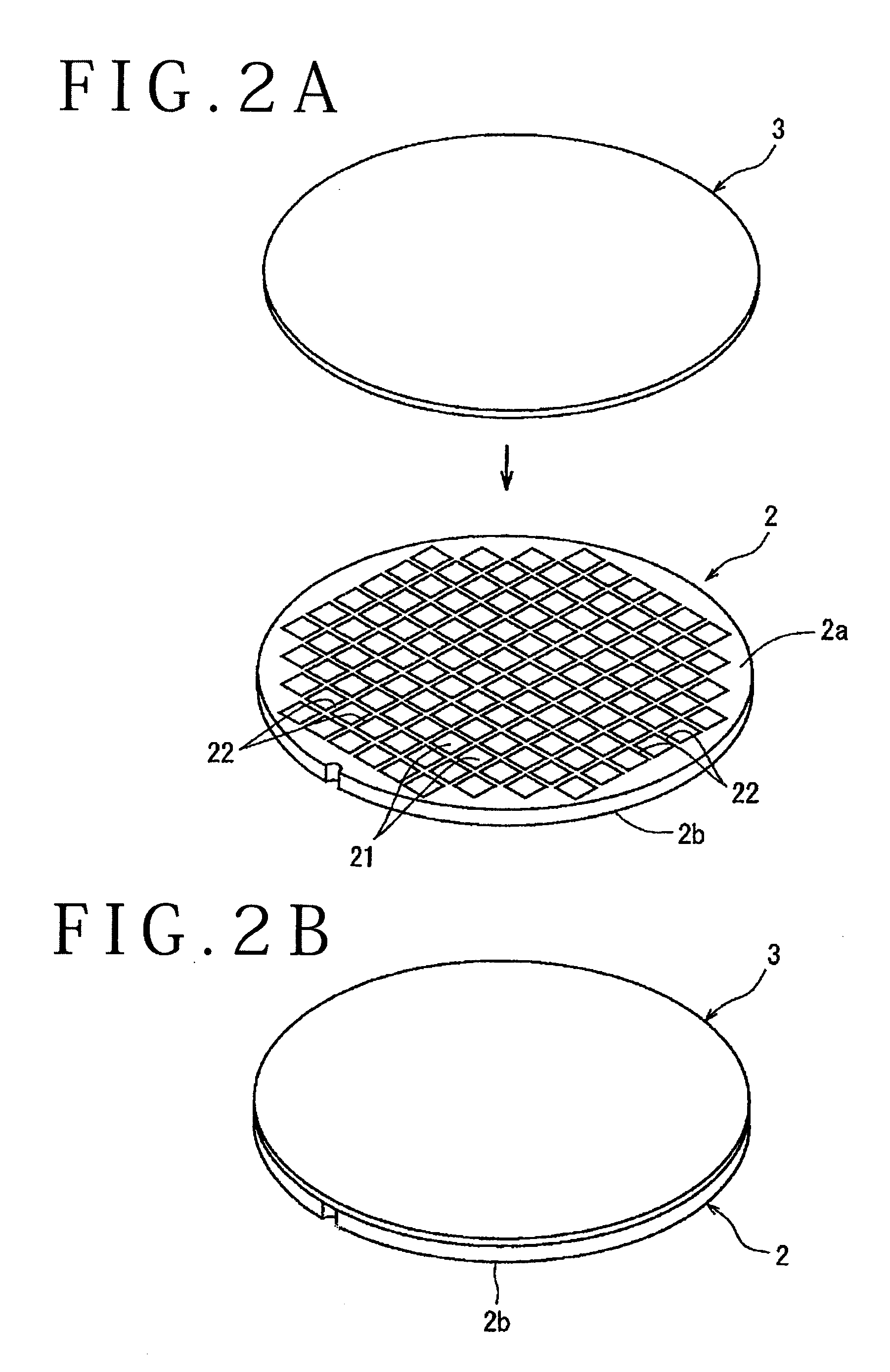Wafer processing method including a filament forming step and an etching step
a processing method and filament technology, applied in the field of wafer processing methods, can solve the problems of reducing productivity, reducing productivity, and degradation of so as to improve the die strength of each chip, improve the quality of each chip, and improve the effect of productivity
- Summary
- Abstract
- Description
- Claims
- Application Information
AI Technical Summary
Benefits of technology
Problems solved by technology
Method used
Image
Examples
Embodiment Construction
[0021]The wafer processing method according to the present invention will now be described in detail with reference to the attached drawings. FIG. 1 is a perspective view of an optical device wafer 2 as a wafer to be processed by the wafer processing method according to the present invention. The optical device wafer 2 shown in FIG. 1 is composed of a sapphire substrate having a thickness of 300 μm, for example, and a plurality of optical devices 21 such as light emitting diodes and laser diodes formed on the front side 2a of the sapphire substrate so as to be arranged like a matrix. These optical devices 21 are partitioned by a plurality of crossing division lines 22 called streets formed on the front side 2a of the sapphire substrate, i.e., the front side of the optical device wafer 2. While the division lines 22 are clearly formed on the front side 2a of the optical device wafer 2 as shown in FIG. 1, there is also a case that division lines are not clearly formed on a glass plate...
PUM
| Property | Measurement | Unit |
|---|---|---|
| diameter | aaaaa | aaaaa |
| wavelength | aaaaa | aaaaa |
| repetition frequency | aaaaa | aaaaa |
Abstract
Description
Claims
Application Information
 Login to View More
Login to View More - R&D
- Intellectual Property
- Life Sciences
- Materials
- Tech Scout
- Unparalleled Data Quality
- Higher Quality Content
- 60% Fewer Hallucinations
Browse by: Latest US Patents, China's latest patents, Technical Efficacy Thesaurus, Application Domain, Technology Topic, Popular Technical Reports.
© 2025 PatSnap. All rights reserved.Legal|Privacy policy|Modern Slavery Act Transparency Statement|Sitemap|About US| Contact US: help@patsnap.com



